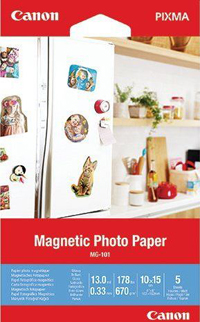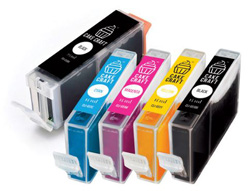Pick printer paper prudently (part two)
Posted on Monday 10 December, 2018

We looked at issues around everyday printer paper in part one, and this time we're turning to specialty media.
When printing presentations and other important documents it often makes sense to choose 100gsm paper as it can give a better impression. We just priced a certain brand of 80gsm paper - one we know from experience gives good results with inkjets and lasers - at $4.50 a ream, while the 100gsm equivalent costs more than $10. That extra 1c per page seems a good investment if it results in new business or a better grade, but you wouldn't want to waste the heavier paper on drafts or other unimportant printouts.
Among other reasons for using heavier papers are that they are less prone to wrinkling when a large area of ink is deposited, and - especially with inkjet printers - there's less show-through when printing on both sides of the paper.
You'd be hard pressed to find a printer that can't cope with heavier papers, but there may be issues once you get into the realms of thin card. This often has a lot to do with how straight a path the paper follows through the printer: in general, the straighter the path, the heavier the acceptable stock. For example, the Brother MFC-L8900CDW multifunction specifies paper weights between 60 and 105gsm for the regular tray, but up to 163gsm when fed via the multipurpose tray. And some printers cope with an even wider range: the Oki B721dn, for instance, is OK (groan!) with stock as heavy as 220gsm in the main trays, or 253gsm in the multipurpose tray. To provide context, 'business card' paper is typically in the 200-250gsm range, but can be 270gsm.
All these papers should be stored the same way as regular office papers (see part one).

Printing photographs
When it comes to printing photographs, it's simplest to select papers from the printer manufacturer's range. You are assured of good results because the papers and inks have been developed to work well together, and furthermore the printer drivers will have been optimised for the those papers. Canon drivers know how to compensate for the differences between Canon's Glossy, Plus Glossy II, Pro II, and Pro Platinum photo papers, and so on.
That's not to say you can't get good results with third-party papers, but unless you can tap into someone else's experience of a good paper/ink combination you risk a lot of trial and error to find something you're happy with, and the subsequent savings on photo paper may not be enough to offset the time and expense that went into that experimentation.
If you are prepared to experiment, a range of 'fine art' photo papers with varying characteristics are sold by a number of companies, and if you're looking for something different it may be worth the trouble.
Keep unused photo paper in the original packaging, which often includes an inner plastic bag that will help protect the paper from the atmosphere. Store opened or unopened packages horizontally in a cool, dry place to reduce the risk of curling.
See Ink Depot's range of photo papers from various manufacturers.

Other specialty products include non-photographic papers with silk or glossy coatings (mostly designed for use in laser printers), and coloured or tinted papers which, apart from the colour, normally have the same characteristics as the white paper in the the same range.
When buying self-adhesive labels, be sure to check whether any particular product's manufacturer recommends its use in laser or inkjet printers. Generally speaking (yes, there are exceptions), labels suitable for inkjet printing can also be used in lasers, but some types of label are only suitable for laser printing because ink cannot adhere or soak into their surface finish.
Laser printing involves heat, and that can melt the adhesive that holds the labels onto the backing sheet. This may result in jamming, so you may prefer to stick to (sorry!) reputable brands rather than trying to save a few dollars on generic labels. Other considerations include storing unused labels by laying them flat in a cool, dark place, and discarding old stock in favour of a fresh supply if there's any sign of curling, as that can lead to jams. As with heavy papers, it's best if a sheet of labels follows a relatively straight path, so follow the printer's instructions, which may include using the multipurpose tray for labels.
Printing brochures
Pre-scored paper for printing brochures used to be available from multiple suppliers, but Avery was the only brand we were able to track down locally while preparing this article. Avery's A4 tri-fold paper is suitable for inkjet and laser printers. This format is commonly used for take-away menus, and for price lists at beauty salons and other types of service businesses. There's also a variant with one third of the sheet divided into four tear-off cards, but it only comes in US letter size and is only suitable for laser printing.
Printing T-Shirts
T-shirt transfer papers don't get as much attention as they used to, but they provide an easy way to produce custom t-shirts or other fabric items. The come in two types to suit light or dark fabrics. All you need to do is print your design onto the transfer paper using an inkjet printer, and then iron it on to the t-shirt. Available from stationery and craft outlets, you can expect to pay between $2 and $5 per sheet. Online merchants (eg, eBay sellers) have prices starting at less than a dollar per sheet.
Edible papers and inks

It's even possible to buy special edible papers and inks in order to produce complex patterns to go on top of cakes and other food items. One local supplier (there are others) is Bake Boss, which stocks edible inks to suit certain Canon and Epson printers. No, don't put edible ink cartridges into a printer that's already been used with regular ink!





Any comments?